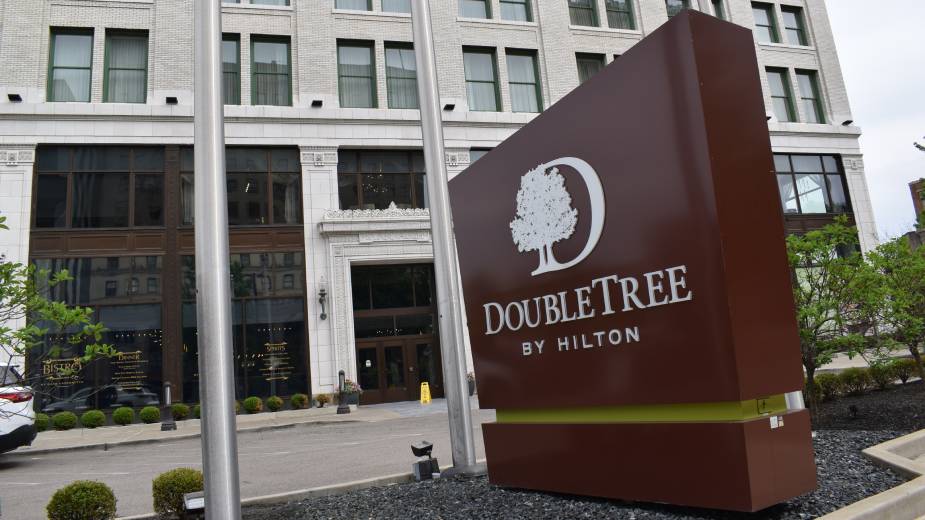Development Officials See Energy District as New Tool
YOUNGSTOWN, Ohio – Leaders of local development agencies are looking at ways to use the newly established Youngstown Energy Special Improvement District to aid projects beyond the downtown hotel project it was created to assist.
The district’s board of directors met Friday for the first time since City Council approved legislation in January to establish it to assist Youngstown Stambaugh Hotel LLC, operators of the DoubleTree by Hilton Youngstown Downtown Hotel.
The Energy Special Improvement District (ESID) is being administered by Western Reserve Port Authority, which hosted the meeting. Most of the meeting, which ran about an hour and a half, was devoted to approving the district’s policies and operations, including electing officers and formalizing an application to be used by parties interested in utilizing the property assessed clean energy – or PACE – financing.
The district permits a commercial property owner to pay a special assessment to finance – or as in the case of Youngstown Stambaugh, refinance – spending on energy improvements to existing properties or new energy-efficient projects.
The hotel partners reported in January expenditures of more than $11.7 million for energy efficiency improvements at the building, according to city documents. They proposed a maximum assessment, which would be collected as part of their property tax bill, of $30.7 million through the PACE arrangement. They would pay maximum average installments of $614,130.21 twice annually for 25 years, with the first payment due Jan. 3, 2024.
“It’s a great tool to have in the toolbox,” said Teresa Miller, executive director of Valley Partners and one of five members of the ESID.
“This is going to be a great tool,” said Kevin Kern, chief financial officer of the port authority and the district’s chairman.
The port authority often works with companies that will be doing some form of energy improvements, said Anthony Trevena, WRPA executive director. It has had discussions with other companies in the past about using PACE financing, but the discussions didn’t advance to the stage of establishing a district.
“You can’t just create one unless you have a project brought forward,” he said.
Ohio is second to only California in utilizing PACE financing as a tool, said Colin Kalvas, a partner at Bricker Graydon LLP. Statewide, more than 250 projects have been completed using PACE financing, and nearly $600 million in investment has been made using the tool, he said.
Established by Youngstown to assist the hotel partners with their efforts to refinance the property, the district currently is limited to projects within city limits, Trevena said. Boardman has an ESID, but it is limited to the Southern Park Mall, which established it for energy efficiency improvements as part of its recent renovation.
“It can grow its geographic boundaries based on applications,” Trevena said. “When we get an application from another community, the geography will expand.” Such an agreement with the ESID would need to be approved by the political jurisdiction where the project was located.
“This is a bigger program and entity than just this project,” Kalvas said. “I think the port’s idea here is to use this to facilitate investment across the two counties that they serve, and that’s what we’ve seen happen in other areas to really good effect.”
“This could be the first stepping stone to a much broader regional impact,” said Nick Chretien, WRPA planning and regional development manager. Chretien is serving as the district’s executive director.
In addition to Miller, who was named vice chairwoman, and Kern, board members are Rich Harvey, Youngstown deputy finance director, treasurer; Juan Santiago, community development manager for Farmers National Bank; and Josh Toot, Mahoning Valley market president for Premier Bank, secretary.
Copyright 2024 The Business Journal, Youngstown, Ohio.



